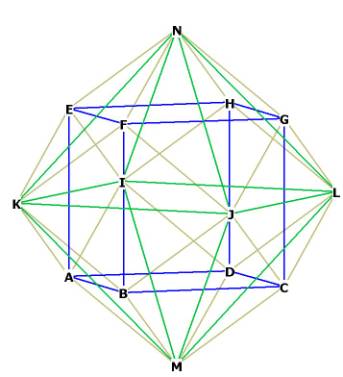|
(2016
premidterm assignment) Model Student Midterm answers 2016 (Index) Essay 1: Compare, contrast, and evaluate Narratives of the Future |
 |
Kimberly Hall
THE POWER OF THREE
All the best things in life come in groups of three- from geometric
stability, to fictional heroes, to narratives of the future. Just like our
favorite fictional trios, the three different narratives – creation/apocalypse,
evolution, and alternate future – may occasionally clash, but under the right
circumstances can work harmoniously. Some speculative fiction stories will be
aligned with one narrative or another, while others prove that the narratives
can intersect without too much dissonance. Like Karin Cooper did in her essay,
“The Alternative Evolution of the Apocalypse”, I will look at all three types of
speculative narratives, and discuss how certain stories’ narratives differ and
why some of them overlap.
The creation/apocalypse narrative is one that seems to never grow old.
The timeline is linear, direct, and easy to grasp—creation, to exile, to
apocalypse, (and sometimes) to rebirth. There are clear lines drawn between good
and evil, and the good-guy-chosen-one tends to come out of the conflict on top.
The biblical book of Genesis is a
clear example of the creation segment of this narrative style, and the book of
Revelation is the ending to that
beginning. In Genesis, humans are one
with God in the Garden of Eden until they fall in sin and are exiled;
subsequently in Revelation the end of
the world has been prophesied, and the storyline sets up Jesus Christ as the
hero of the true believers who will vanquish all evil in the world and lead them
to a better life, described in rich, sublime detail. Octavia Butler’s
Parable of the Sower is another tale
that follows the creation/apocalypse narrative, with our protagonist Lauren
starting her story in a relatively-utopian neighborhood and eventually being
forced out of that neighborhood, and ending with her fighting her way to
establishing her own relatively-utopian community.
Where Parable branches out
from the creation/apocalypse narrative is in Lauren’s personal story, which
follows the evolution narrative much more closely. Lauren is described as a
survivor, and her personal philosophy, which she calls ‘Earthseed’, dictates
that the world’s greatest constant is change and that humans must adapt to the
ever-changing world in order to survive. This philosophy is very in line with
the Darwinian theory of ‘survival of the fittest’, which is one of the primary
narrative forces in evolution stories. Another story with this ‘survival of the
fittest’ model is Paul Di Filippo’s “Stone Lives”. Stone, the main character, is
blind and physically disadvantaged in his world, but has developed some
extremely useful skills in order to survive in ‘the Bungle’ where he lives, like
a keen sense of smell and excellent memory. Later he is given cybernetic
implants, which allow him to see as well as enhance his memory even further, and
with this adaptation Stone is able to thrive and dominate in the ever-changing
world of corporations that he is thrust into.
(AUTHOR’S NOTE: Later, I will discuss the alternate future narrative, which is apparent particularly in a lot of cyberpunk, which we are going to read later in the semester. I’d especially like to discuss how all three narratives converge in The Time Machine, because I just find that really interesting.)
 |
 |
 |
